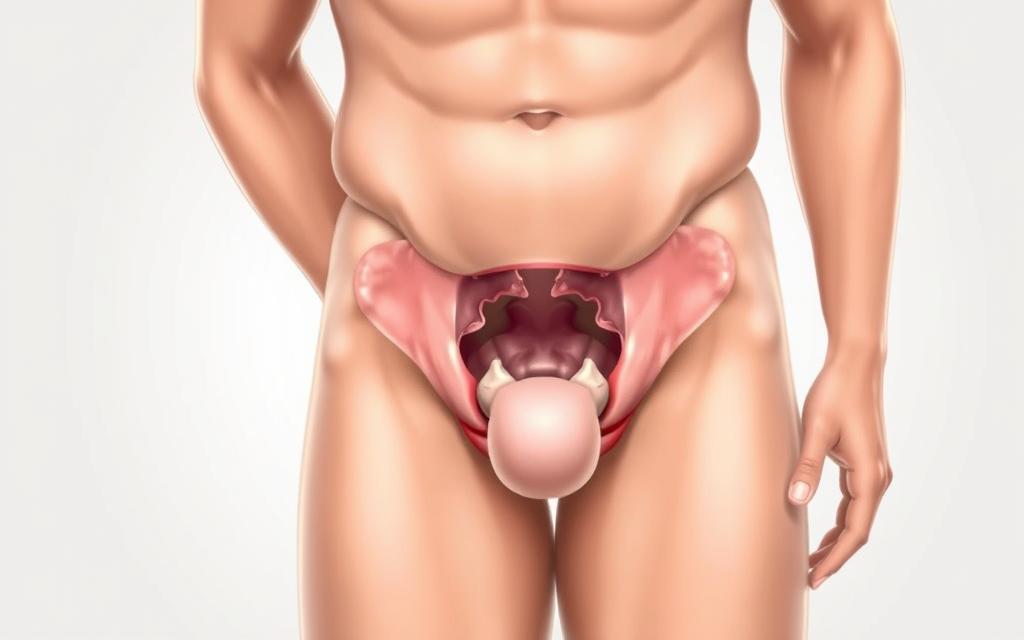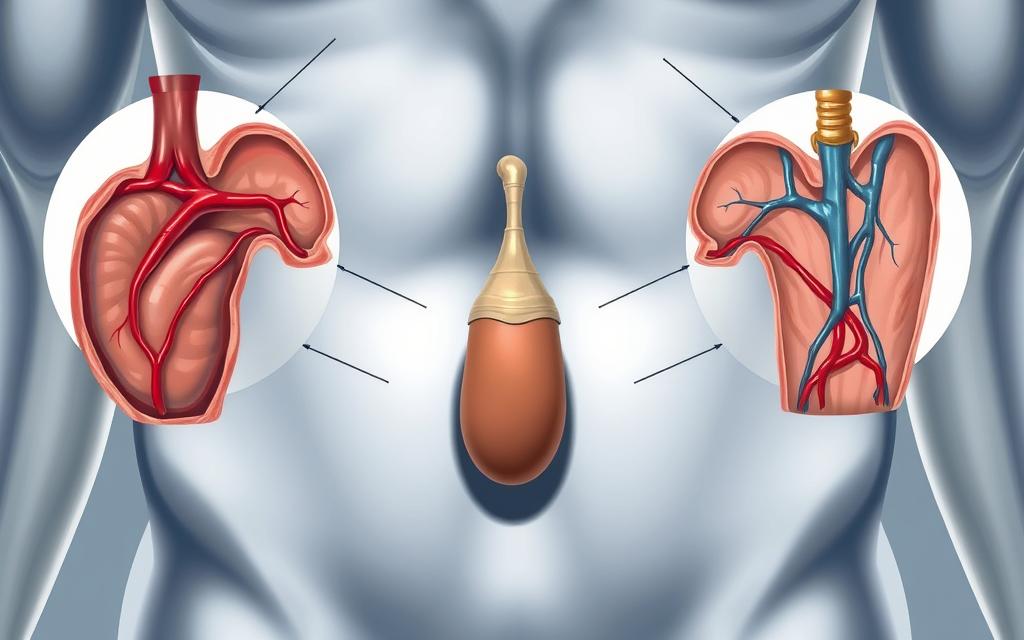How to Recognize the Signs of Erectile Dysfunction: Key Symptoms to Look For
Erectile dysfunction (ED) is a common condition affecting men’s health, impacting not just older adults but also younger men. Recognizing the signs of ED is crucial for early intervention and treatment.
Experiencing erectile dysfunction symptoms can be distressing, and it’s essential to understand that you’re not alone. According to recent data, a significant percentage of men under 30 experience ED, often due to underlying health issues or lifestyle factors.
For more information on addressing ED at a young age, you can visit Colorado Urologists to learn about the available treatments and expert advice on managing the condition.
Understanding Erectile Dysfunction and Its Impact
Understanding the complexities of erectile dysfunction is crucial for addressing its far-reaching effects on men’s health and relationships. Erectile dysfunction (ED) is a condition that affects a significant number of men, causing distress and impacting their overall well-being.

What Defines Erectile Dysfunction Medically
Medically, erectile dysfunction is defined as the inability to achieve or maintain an erection sufficient for satisfactory sexual performance. This condition can be caused by a variety of factors, including vascular disease, diabetes, and neurological disorders. For men experiencing ED, seeking professional help is crucial. You can find affordable erectile dysfunction treatment options that cater to different needs.
The Psychological and Relationship Effects
Erectile dysfunction can have profound psychological effects, including feelings of inadequacy, low self-esteem, and anxiety. These emotional challenges can strain relationships, affecting communication and intimacy between partners. It’s essential to address these issues openly and seek support when needed.
Breaking the Stigma Around ED
One of the significant barriers to seeking help for erectile dysfunction is the stigma surrounding the condition. By fostering open discussions and promoting education about ED, we can work towards breaking down these barriers. Encouraging men to speak openly about their experiences can help normalize the condition and promote a more supportive environment.
By understanding the medical, psychological, and social aspects of erectile dysfunction, we can better address its impact and work towards effective solutions. This comprehensive approach is vital for improving the sexual health and overall well-being of individuals affected by ED.
Primary Physical Symptoms and Warning Signs
Understanding the physical symptoms associated with erectile dysfunction is the first step towards addressing the issue. Erectile dysfunction (ED) is characterized by the inability to achieve or maintain an erection suitable for sexual intercourse. The symptoms can vary among individuals, but there are common physical signs that may indicate the presence of ED.
Difficulty Achieving an Erection
One of the most common symptoms of erectile dysfunction is the difficulty in achieving an erection. This can be due to various factors, including poor blood flow, nerve damage, or hormonal imbalances. Men experiencing this symptom may find it challenging to get an erection even when they are aroused.
Trouble Maintaining an Erection During Sexual Activity
Another significant symptom is the inability to maintain an erection during sexual activity. This can be frustrating and may lead to feelings of inadequacy. It’s essential to recognize that occasional difficulties are normal, but persistent problems may indicate underlying health issues.
Reduced Sexual Desire or Libido
A decrease in sexual desire or libido can also be a warning sign of erectile dysfunction. Low testosterone levels are often associated with reduced sexual desire. Men experiencing this symptom should consider consulting a healthcare provider, as testosterone boosters may be a potential treatment option.
Other Physical Indicators to Monitor
Other physical indicators of erectile dysfunction include erectile dysfunction after ejaculation, painful erections, or erections that are not firm enough. Monitoring these symptoms can help in early detection and treatment.
| Symptom | Description | Possible Causes |
|---|---|---|
| Difficulty Achieving an Erection | Inability to get an erection | Poor blood flow, nerve damage, hormonal imbalances |
| Trouble Maintaining an Erection | Losing an erection during sexual activity | Stress, anxiety, underlying health conditions |
| Reduced Sexual Desire | Low libido | Low testosterone, hormonal imbalances |

Recognizing these symptoms is crucial for seeking appropriate medical care. Early intervention can significantly improve treatment outcomes for men experiencing erectile dysfunction.
Erectile Dysfunction Under 30: Causes and Risk Factors
Men under 30 are not immune to erectile dysfunction, and understanding its triggers is crucial for effective management. Erectile dysfunction (ED) in young men can stem from a variety of factors, including psychological, physical, and lifestyle elements.
Psychological Triggers in Young Men
Psychological factors play a significant role in the development of erectile dysfunction in young men. Stress, anxiety, and depression are among the common psychological triggers.
Performance Anxiety and Stress
Performance anxiety is a significant psychological factor that can lead to erectile dysfunction. The pressure to perform sexually can cause stress, which in turn can affect a man’s ability to achieve or maintain an erection.
Depression and Mental Health Connections
Depression and other mental health issues can also contribute to ED. The emotional toll of depression can impact sexual desire and function, leading to difficulties in achieving an erection.
Physical Health Conditions That Contribute to Early ED
Certain physical health conditions can contribute to the development of erectile dysfunction in young men. Conditions such as diabetes, hypertension, and obesity can affect blood flow and nerve function, leading to ED.
Lifestyle Factors That Increase Risk
Lifestyle choices can significantly impact the risk of developing erectile dysfunction. Factors such as alcohol consumption, substance use, diet, and exercise levels can all play a role.
Effects of Alcohol and Substance Use
Excessive alcohol consumption and the use of certain substances can impair sexual function. Alcohol can affect the nerves and blood vessels, leading to difficulties in achieving an erection.
Impact of Diet and Exercise
A poor diet and lack of exercise can contribute to conditions that increase the risk of ED, such as obesity and cardiovascular disease. A healthy diet and regular exercise can help mitigate these risks.
Diagnosis and Treatment Options for ED Symptoms
Diagnosing and treating erectile dysfunction effectively requires a comprehensive approach that considers both physical and psychological factors. This multifaceted strategy is essential for addressing the complex nature of ED.
When to Consult a Healthcare Provider
If you’re experiencing persistent difficulties with achieving or maintaining an erection, it’s crucial to consult a healthcare provider. Early intervention can help identify underlying causes and prevent the condition from worsening. A healthcare professional can offer guidance on the best course of action and support you in managing ED symptoms.
Common Diagnostic Procedures
Diagnosing erectile dysfunction involves a combination of medical history review, physical examination, and potentially, additional tests to rule out underlying conditions. These diagnostic procedures help healthcare providers understand the root cause of ED and tailor treatment accordingly. For more information on diagnostic approaches, you can visit Colorado Urologists for insights into treatment options when common medications like Viagra are not effective.
Available Treatment Approaches
Treatment for erectile dysfunction can vary widely, depending on the underlying cause and the individual’s overall health. Available treatment approaches include medication options, lifestyle modifications, and psychological support and therapy.
Medication Options
Medication is often the first line of treatment for ED. Phosphodiesterase type 5 inhibitors, such as sildenafil (Viagra) and tadalafil (Cialis), are commonly prescribed. These medications work by enhancing the effects of nitric oxide, a natural chemical the body produces that relaxes muscles in the penis, increasing blood flow.
Lifestyle Modifications
Making certain lifestyle changes can significantly impact ED symptoms. This includes adopting a healthier diet, increasing physical activity, reducing alcohol consumption, and quitting smoking. These modifications not only improve erectile function but also contribute to overall health and well-being.
Psychological Support and Therapy
For many men, psychological factors play a significant role in erectile dysfunction. Psychological support and therapy can be invaluable in addressing these issues. This might involve counseling or sex therapy to tackle underlying psychological barriers to sexual function.
By understanding the available diagnosis and treatment options, individuals can take proactive steps towards managing their ED and improving their quality of life.
Conclusion: Taking Proactive Steps for Sexual Health
Recognizing the signs of erectile dysfunction is a crucial step towards maintaining good sexual health. By understanding the physical and psychological symptoms, men can take proactive measures to address potential issues before they escalate.
Erectile dysfunction under30 is a growing concern, and it’s essential to acknowledge the risk factors and triggers that can contribute to its development. By prioritizing men’s health and seeking medical attention when needed, individuals can reduce their risk of experiencing ED.
Maintaining good sexual health is vital for overall well-being. By being aware of the symptoms and taking proactive steps, men can improve their quality of life and strengthen their relationships. If you’re experiencing symptoms of ED, don’t hesitate to consult a healthcare provider to discuss available treatment options and take control of your sexual health.
